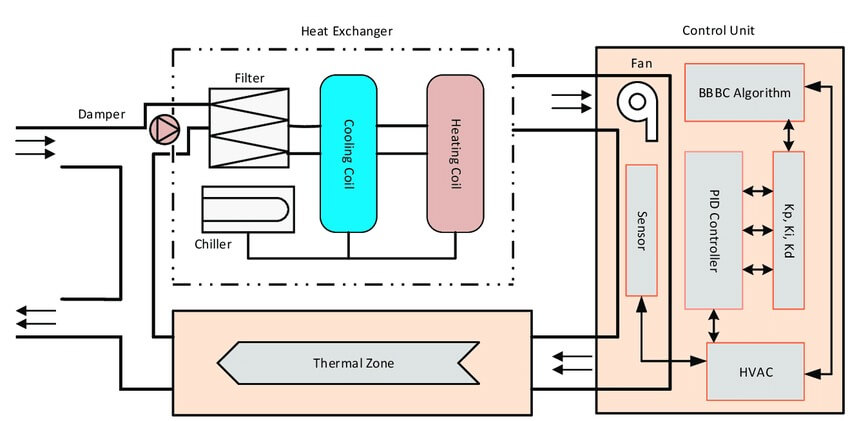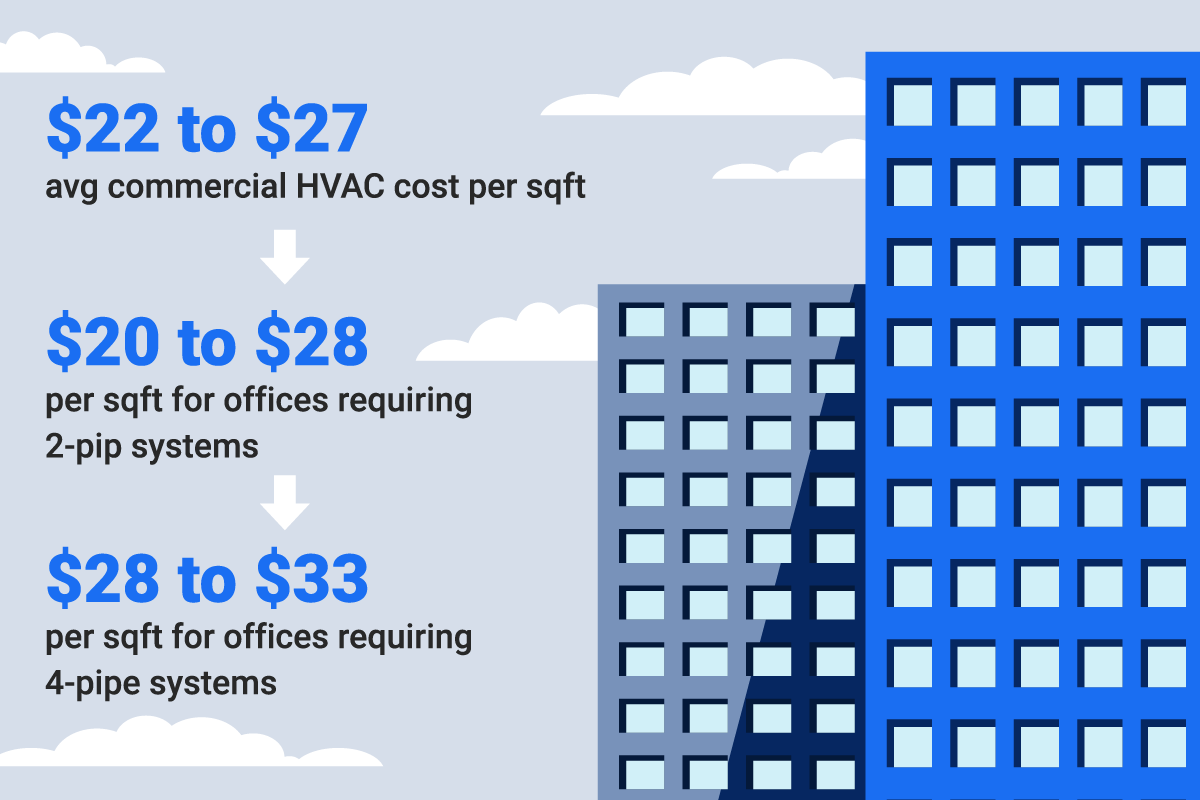Most people assume HVAC pricing is all about the unit’s “tonnage” or SEER rating.
But here’s a lesser-known truth: the square footage of your home is only the starting line—not the final cost driver.
I’ve seen two 2,000-square-foot homes side by side where one HVAC install cost $8,400 and the other nearly $14,000. Same square footage. Different ductwork, insulation, layout, and energy efficiency goals. That’s the nuance most cost calculators miss.
And yes, I learned this the hard way—after explaining to a frustrated homeowner why her “$4 per square foot” quote ballooned to nearly $7 once we opened the attic.

Average HVAC Cost Per Square Foot (2025 Data)
Let’s get specific. Based on current 2025 pricing trends from U.S. contractors:
| Home Type | HVAC System Type | Average Cost per Sq. Ft. | Typical Total Cost Range |
|---|---|---|---|
| New Construction | Central Split System | $4 – $7 | $8,000 – $14,000 (2,000 sq ft) |
| Retrofit (Existing Home) | Central + Duct Replacement | $6 – $10 | $12,000 – $20,000 |
| High-Efficiency Heat Pump | Variable Speed / Inverter | $8 – $12 | $16,000 – $24,000 |
| Mini Split (Zoned System) | Ductless, per zone | $3 – $6 | $4,000 – $9,000 (per zone) |
The cost per square foot generally ranges between $4 and $10, depending on complexity, brand, and energy efficiency targets.
Why Size Matters
Undersized units struggle to maintain temperatures, while oversized systems short-cycle, wasting energy. Proper sizing requires Manual J calculations by professionals.

Why Square Footage Alone Is Misleading
Here’s what I mean:
HVAC isn’t like buying carpet—where $5 per square foot feels predictable. It’s more like tailoring a suit. The square footage gives you fabric needs, but fit and finish determine the final bill.
A 2,000 sq ft open-concept home in Texas needs more cooling capacity (and higher SEER efficiency) than a shaded 2,000 sq ft home in Vermont. The difference? Sometimes $4,000 to $6,000 in total system cost.
My insider rule of thumb:
- Every 500 sq ft of usable conditioned space adds roughly $2,000–$4,000.
- Ductwork upgrades can swing costs by 20–40%.
- Old R-22 refrigerant systems cost more to replace due to disposal regulations.
Case Example: When “Per Sq. Ft.” Math Broke Down
One homeowner I worked with in Denver had a 1,675 sq ft ranch-style home.
She’d budgeted $7,000 based on online averages—roughly $4.2 per square foot.
Once we inspected, we found:
- Original ducts from the 1970s leaking 25% of airflow
- A 2.5-ton system undersized for the new insulation and window layout
- An attic access issue requiring rerouting
Final invoice? $11,200. Or about $6.7 per square foot.
But here’s the kicker: her monthly energy bill dropped by 38%, and comfort complaints (those cold spots near the hallway) disappeared.
The payback period: 3.8 years. That’s a number worth smiling at.
A Quick Analogy: HVAC Pricing Is Like Custom Coffee Brewing
Think of HVAC like brewing coffee. You can buy beans for $15 a bag—or invest in a burr grinder, digital scale, and espresso machine. Same beans, wildly different flavor and experience.
Your HVAC system “brew” depends on how precise you want your indoor comfort. Smart thermostats, variable compressors, zone controls—all flavor upgrades that bump your per-square-foot cost. But you taste the difference every day.

Myths & Misconceptions: “You Can Just Use the Rule of Thumb”
Contrarian take: that old “$5,000 per ton” rule is outdated.
It ignores advancements in 2025 tech like inverter compressors, dual-fuel systems, and SEER2-rated equipment. These aren’t linear upgrades; they shift both the installation complexity and long-term efficiency curve.
In other words, you can’t plug modern systems into 1990s math.
Personal Insight #1: Hidden Labor Multiplies Cost Faster Than Equipment
After a decade in the field, I’ve seen homeowners shocked that labor makes up 40–60% of total cost. Why? Access. Crawl spaces, old duct design, and attic retrofits chew through hours fast.
The smartest move you can make? Get a Manual J Load Calculation before buying anything. It’s the only way to ensure your system size matches your home’s thermal profile. Tools like CoolCalc or HVAC-Calc make this easier than ever.
Personal Insight #2: Bigger Isn’t Better—It’s Costlier and Louder
Oversized systems short-cycle, driving humidity up and lifespan down. One of my clients paid $2,000 extra for a “bigger” unit that ran less efficiently.
Six months later, he called to say his humidity hovered at 68%.
We replaced it with the right size. Silence. Comfort. Efficiency.
What Impacts Your Cost Beyond Square Footage
Let’s list it visually:
- System type: Split, package, heat pump, or mini split
- Efficiency rating: SEER2 and HSPF numbers drive both price and rebates
- Ductwork: New, replaced, or sealed
- Labor complexity: Multi-story homes cost more
- Location: Labor and permit fees vary (California vs. Georgia? Huge spread)
- Smart add-ons: Thermostats, zoning, indoor air quality modules
Personal Insight #3: Don’t Skip the Energy Audit
If you’re spending $10k–$20k on HVAC, get a $250 energy audit.
I’ve watched that small investment save people up to $1,800 annually in energy waste.
A simple blower door test and thermal camera check can identify leaky walls that make your “high-efficiency” system work twice as hard.
Sensory Snapshot: What Comfort Feels Like
Imagine walking barefoot on hardwood at 7 a.m. in winter. No cold floor shock.
That’s the feeling a properly sized HVAC system gives you—not just numbers on a thermostat but balanced, invisible comfort.
So, What Should You Budget?
Here’s a simplified range for planning:
| Home Size (Sq. Ft.) | Estimated HVAC Cost (2025) |
|---|---|
| 1,000 – 1,499 | $5,000 – $10,000 |
| 1,500 – 2,000 | $8,000 – $14,000 |
| 2,000 – 2,500 | $10,000 – $18,000 |
| 2,500 – 3,500 | $14,000 – $22,000+ |
If you’re replacing both the furnace and AC, add $2,000–$3,500 for upgraded ductwork and smart thermostat setup.
Quick Reality Check (2025 Trends)
- Inflation has nudged HVAC materials up 7–9% YoY
- Federal rebates still favor ENERGY STAR-rated heat pumps
- Copper pricing continues to impact refrigerant line costs
- SEER2 standards mean higher upfront cost but lower energy bills long-term
What You Should Do Next
- Get a Load Calculation – not an estimate based on square footage.
- Ask for itemized bids – equipment, ductwork, labor separately.
- Compare SEER2 efficiency vs. local climate – don’t overspend on efficiency that your region can’t leverage.
- Plan for 5–10% above quotes – contingencies happen once installation begins.
And if you’re the data-driven type, track quotes using a simple spreadsheet (columns for brand, SEER2, total cost, warranty). It’s the fastest way to make a confident decision.
Bottom line:
Square footage gives you a ballpark. But comfort, efficiency, and long-term value come from precision planning.
And yes—sometimes that $7-per-square-foot install pays for itself faster than the “cheap” $4 one ever could.




![HVAC BIBLE [10 in 1] The Ultimate Beginner's...](https://m.media-amazon.com/images/I/517xGvMqrUL._SL160_.jpg)